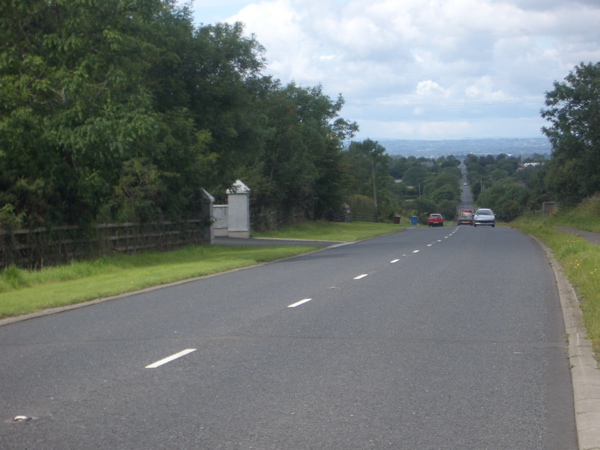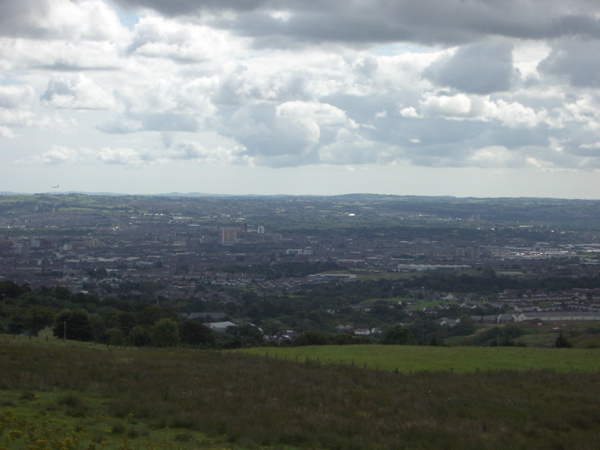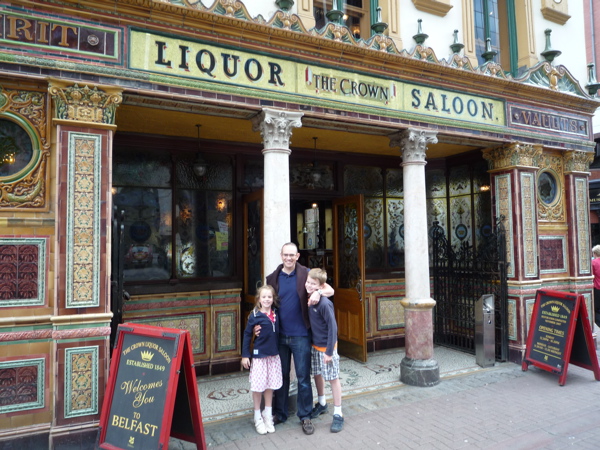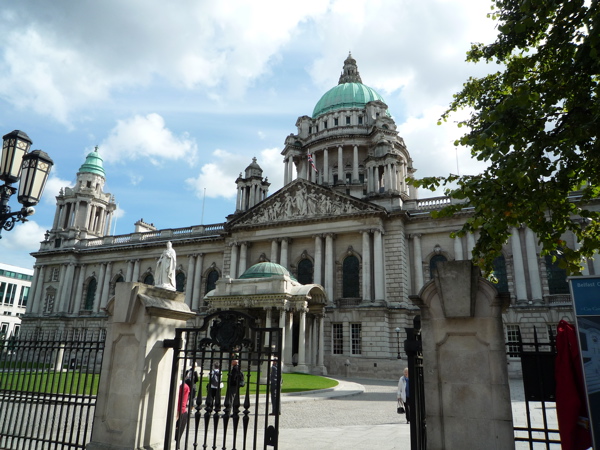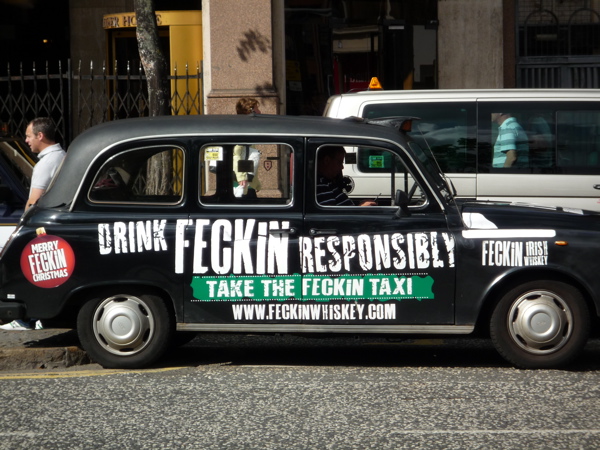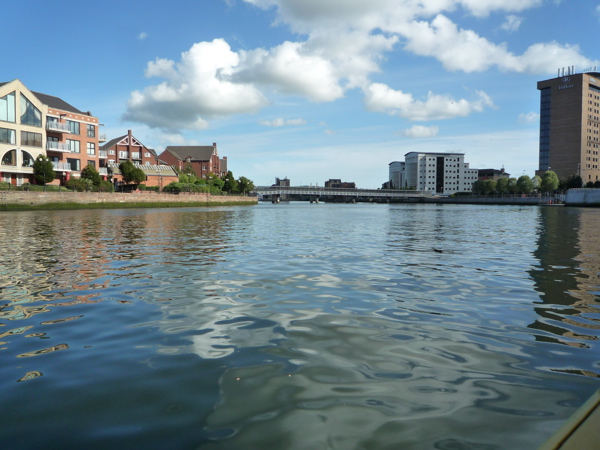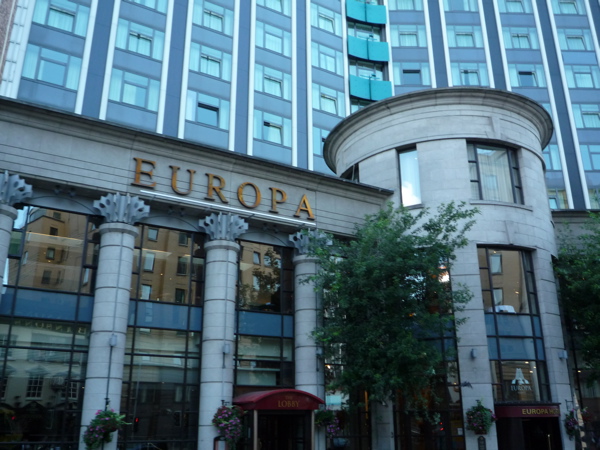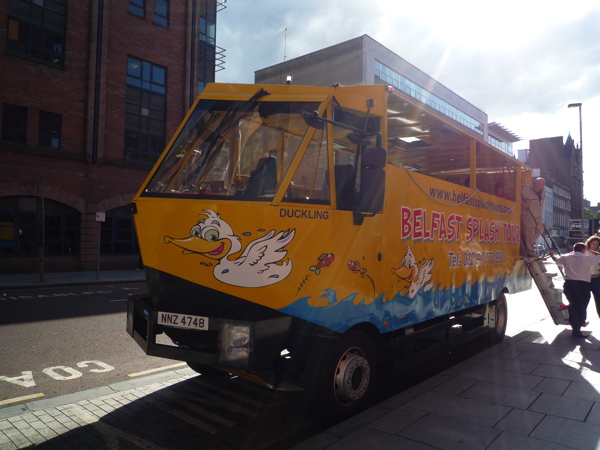Day 11 - Ballymoney to Belfast - projected distance 44 miles.
After a filling 'Ulster Fry' breakfast I was pleased to set off in the sunshine this morning. Pedalling gently along country lanes, I thought I could quite easily have been in Somerset or any other rural part of the UK. That's why I did a double-take when I cycled past Portglenone police station, which was fortified with high walls. It seemed incongruous.
Thirty miles or so into my ride I pulled up at a branch of Ulster Bank in Randalstown to get some sterling from the cash machine. It gave me some ornate Ulster banknotes, resplendent with pictures of The Giant's Causeway and the Belfast shipyards. I crossed over the M22 motorway and on towards the county town of Antrim on the four-mile cycle path leading into town. I used it because I felt I should, rather than because I wanted to. I can see that bike lanes are useful because they separate you from the traffic, but more often than not I find they are not very well maintained. Usually they are littered with debris, stones, and shards of glass - I'm always very wary of punctures on cycle paths, and find I have to concentrate on the path ahead.
The cycle path into Antrim ended at the army barracks just outside of the town. They looked forbidding, with their security cameras, dogs, and razor wire, so there was no way I was going to stop to take photos. I passed by the north-eastern corner of Lough Neagh, a 400sq km lake and the largest in Britain. A few miles further on, I turned on to the B39, called 'Seven Mile Straight.' Toiling up and down its (straight) hills, I wondered what would happen if this road - with no speed cameras - was in Essex.
With 10 miles to go I was expecting a nice flat run-in to Belfast, but I hadn't reckoned on the Black Mountains which ring the city to the north. The road climbed up to just over 1000 feet, making this just about the biggest climb I've faced in Ireland so far. The reward at the top was a great view of the city, and of course I enjoyed the fast run down the Crumlin Road, past the now-dilapidated Crumlin Road courthouse and into the centre of Belfast, dominated by the fine City Hall. Apparently, the natives of Belfast use the mountains for their 48-hour weather forecast. They say that if you can see the Black Mountains, it's going to rain; and if you can't see them, it's raining already.
In the afternoon we all went on 'The Duckling' amphibious vehicle, which took us on a city tour before plunging into the River Lagan for a quick cruise as well. We took in quite a few of the sights - the Grand Opera House, the Crown Bar, the old shipyards with their massive cranes, Queen's University, and the Europa Hotel, said to have been bombed 38 times. Now there are plenty of hotels in Belfast, but they are nearly all fairly new: Belfast has plenty of welcome visitors these days, but of course that hasn't always been the case.
On to Dublin tomorrow - a capital-to-capital ride that will be my longest day in the saddle.
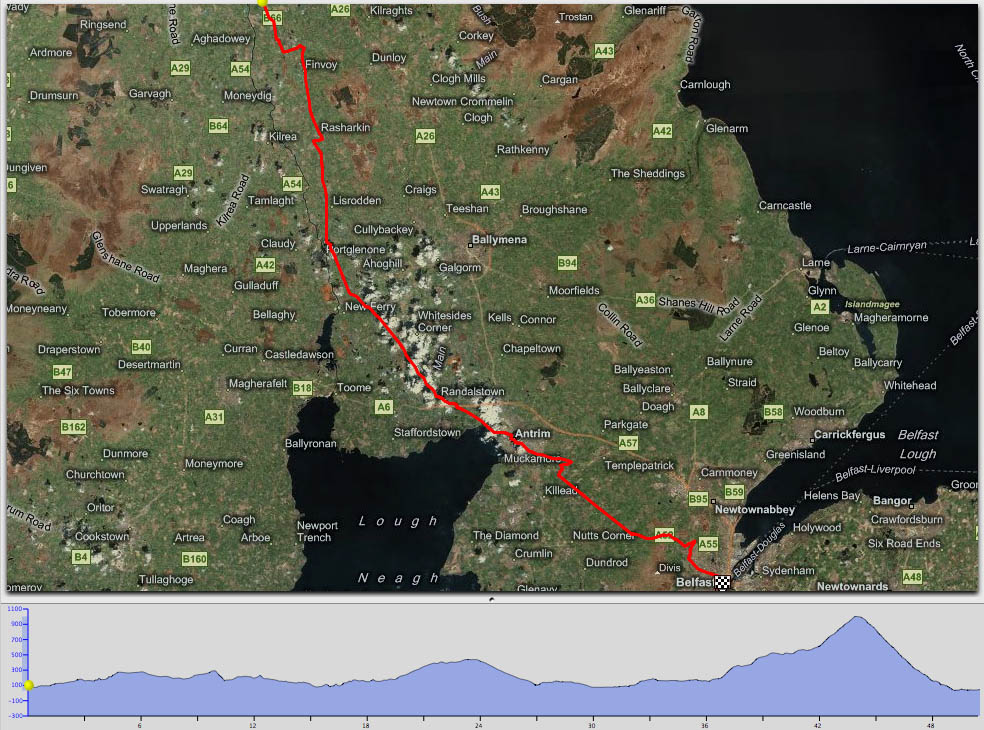
|
|
|
Distance covered today: 50.4 miles
|
